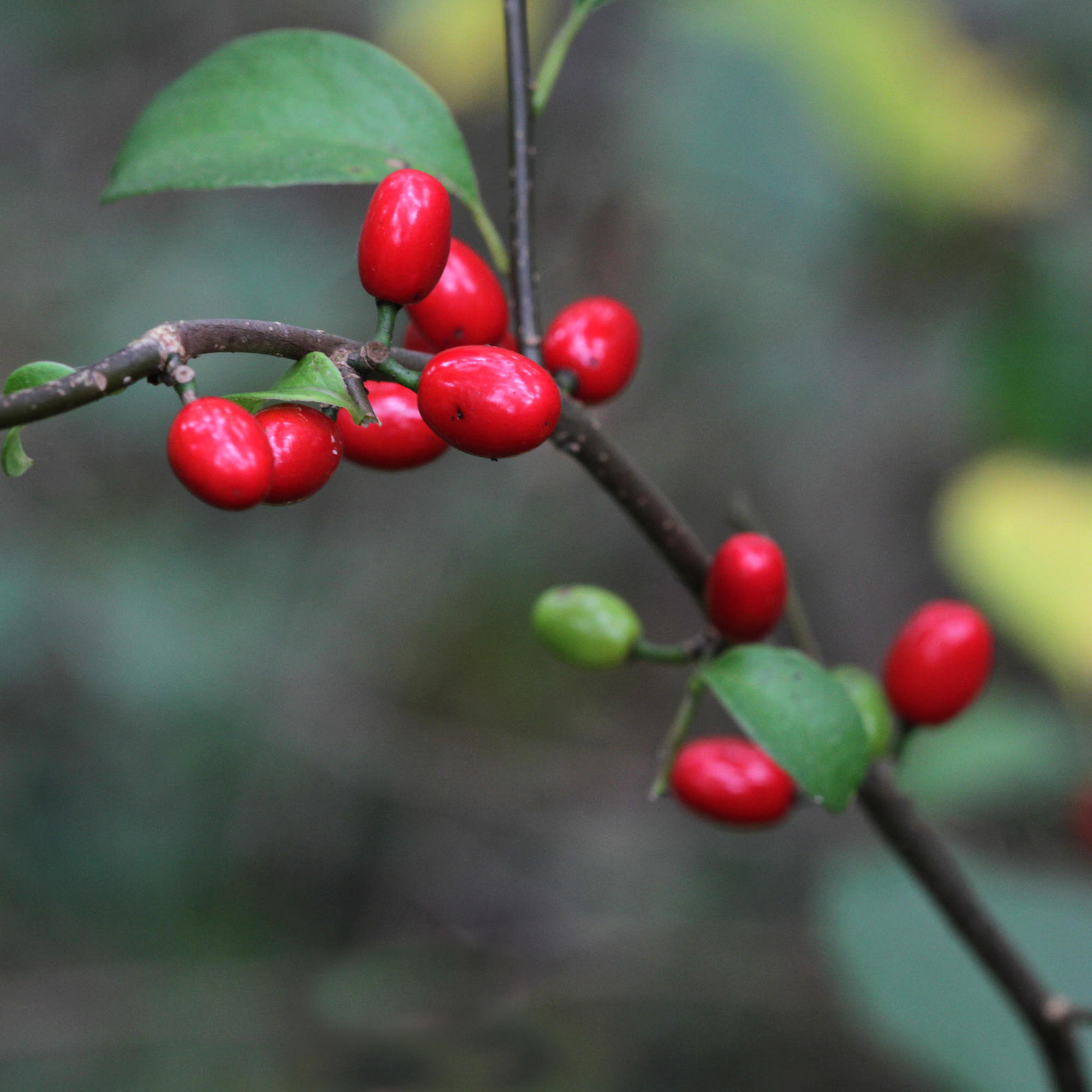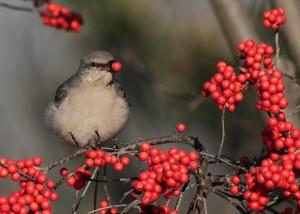One way to make big strides in increasing the number of bird-friendly native plants in your community is to ask city and county governments to use more plants from the Audubon North Carolina Bird-Friendly Native Plants list as approved plants for developers, builders, and city and county landscapers to use when making plant selections.
It may take time and persistence, but asking for this change is do-able. Read on to learn how the Forsyth Audubon Society succeeded and learned from their challenges and solutions.
Win By Doing the Work For Them
Winston-Salem and Forsyth County have made their Suggested Plant Materials List a whole lot more bird-friendly, thanks to the efforts of three dedicated Forsyth Audubon Society chapter members and a supportive city planner.
The Suggested Plant Material List is the guide used by developers and builders, and city and county inspectors to approve site plans for plantings. The plantings are often around government buildings, in traffic medians and in parks. As they stand, many of these lists are often a mix of native and nonnative plants and sometimes have lots of plants that are not bird-friendly. This list is a guide, not a requirement as inspectors may approve other species at their discretion, but this is where Audubon chapters and interested individuals can have one of the biggest impacts on bringing more bird-friendly native plants to your community.

In November 2015, Forsyth County commissioners joined Winston-Salem City Council members in unanimously approving revisions to the Suggested Plant Materials List, which is written into an ordinance (UDO-266). In short, city and county plant lists now include many more native plants than before and contain no exotic plants known to be invasive. The new introductory language says plainly, “The use of native plants is recommended where possible.”
This was a culmination of the work of Bill Davis, Audubon North Carolina board member and a founding member of Audubon NC’s Bird-Friendly Communities team, and Susan Andrews, longtime Forsyth Audubon member and a native plant landscape designer. Bill has been working toward these changes since early 2013 when the Bird-Friendly Communities team met for the first time. Susan worked closely and tirelessly with Bill to gather the technical information needed and to gauge the suitability of plants for local use.
The major key to success was to help rebuild the Suggested Plant Material List for the City Council with specific recommendations for bird-friendly native plants.
Key changes to the lists included:
- Adding numerous bird-friendly native plants, including Spicebush (Lindera benzoin), Winterberry (Ilex verticillata), Rabbiteye Blueberry (Vaccinium virgatum), Persimmon (Diospyros virginiana), native cherry species in the genus Prunus, native Viburnum species, Red Buckeye (Aesculus pavia). Previously, these species could only be used with special permission from the city or county inspector.
- Putting native plants first and non-native plants second within each category of plants, and labeling them as such.
- Adding height, spread, growth rate, light needs. and special comments (previously, the list contained only the name of the plant and its category, e.g. large variety trees, etc.)
- Removing exotic invasive plants including Burning Bush (Euonymus alatus), English Ivy (Hedera helix), Russian Olive (Elaeagnus angustifolia), Nandina (Nandina domestica) and Bradford and Chanticleer Pear (Pyrus calleryana cvs.)
- Removing a handful of non-native plants that do not grow well in Forsyth County.
City council members and county commissioners alike expressed their gratitude to our team for doing the hard work of adding valuable information to the lists and making them easier to use with the additional plant-specific information.
Bring Native Plants to Your Community
How can you replicate this success within your own city or county government?
Although this local effort stalled several times along the way team members persisted by enlisting the support of a council member and a city planner who championed the revisions and advised the group on how to proceed. At no point did the revisions cause any controversy.
Kim Brand, Audubon NC Bird-Friendly Communities coordinator, is currently working with Bill and Susan, along with members of our Bird-Friendly Communities team including Kacy Cook of the Green Growth Toolbox, a program of the NC Wildlife Resources Commission, to create documents that will help others across the state effect similar changes in their own cities, towns and counties.
If you’re eager to get started, the first three steps are straightforward and require no native-plant expertise:
- Look up your city, town, or county’s plant list online.
- Print out the list and mark it up.
- Indicate which plants are exotic and invasive: see here for up-to-date lists from the NC Native Plant Society to help you.
- Indicate which plants are native to NC: first check our list of 400 recommended bird-friendly plants for NC; if a plant is not on that list, check USDA map to see whether there is green shading in NC for this species or consult Flora of the Southern and Mid-Atlantic States by Alan S. Weakley.
- Find someone on the city or town staff willing to meet with you – anyone involved with planning, vegetation management, sustainability, landscape architecture or inspections may be helpful. Take an Audubon NC Native Plants for Birds brochure with you. Tell them what you care about – more natives for birds and butterflies, removal of exotic invasive plants – and ask for their advice on what steps you could take to ask for these changes formally.
Let us know how it goes and ask for help by contacting Kim Brand.

Top Five Lessons Learned
- Add value. Making the list more informative, by adding the height and spread of every plant, gave Forsyth’s revisions increased value that was obvious to everyone.
- Be moderate. Adding more bird-friendly native plants AND more non-native plants to the list made it unlikely that anyone would object.
- Find a champion. Getting someone in a key position – a city council member or staff member – to champion the cause got this project going again after a couple of stalls.
- Check in with people who will have to live with the changes. Hearing that local homebuilders and landscape architects were fine with the proposed revisions was important to city staff and elected officials alike.
- Patience pays off. These changes don’t occur quickly – be persistent and remember you’ll have to pester people sometimes to get things moving again. Think in years, not months.
Increasing the use of bird-friendly native plants in North Carolina is a major goal of Audubon North Carolina’s Bird-Friendly Communities program. Click to learn about the benefits of growing with bird-friendly native plants in your yard and community.



